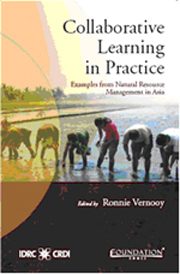Book contents
- Frontmatter
- Contents
- Foreword
- Acknowledgements
- Preface
- Chapter 1 Toward Centres of Excellence for CBNRM (Community-Based Natural Resource Management)
- Chapter 2 Participatory Research and Development in South Asia
- Chapter 3 Adaptive Learning: From Isang Bagsak to the ALL in CBNRM Programme
- Chapter 4 Mainstreaming CBNRM in Chinese Higher Education
- Chapter 5 Comparing the Case Studies
- References
- Notes on Contributors
- Index
Chapter 1 - Toward Centres of Excellence for CBNRM (Community-Based Natural Resource Management)
Published online by Cambridge University Press: 26 October 2011
- Frontmatter
- Contents
- Foreword
- Acknowledgements
- Preface
- Chapter 1 Toward Centres of Excellence for CBNRM (Community-Based Natural Resource Management)
- Chapter 2 Participatory Research and Development in South Asia
- Chapter 3 Adaptive Learning: From Isang Bagsak to the ALL in CBNRM Programme
- Chapter 4 Mainstreaming CBNRM in Chinese Higher Education
- Chapter 5 Comparing the Case Studies
- References
- Notes on Contributors
- Index
Summary
Mastering action through collaborative learning
“The PR & D [Participatory Research and Development] programme … at the Assam Agricultural University gave the researchers the opportunity to understand the importance of involving the community in variety selection for upland Ahu rice. More importantly, researchers were exposed to the cultural diversity of different communities … [and learn more about] their farming practices and livelihood options. They were able to interact with the community on a continuous basis, understand their behavior and rationale for some of the community decisions in rejecting technology improvement in upland Ahu rice.”
Sharma and Pathak (2006)“Before we joined the ALL [Adaptive Learning Linkages] in CBNRM [Community Based Natural Resource Management] programme, frankly, every strategy that we implemented was by trial and error. We did not really have a systematic way of learning. But in this programme, every goal is identified, step by step. Before the mentoring visit, we did not have a specific task for our radio programming. We broadcast every issue to the community. Now, we focus on three main issues: environment, policy, and public service delivery. With this, Yascita [an NGO], can get more information and data that can be used for advocacy.”
Muh. Aswan Zanynu, Yascita, Indonesia, 2008 (ALL in CBNRM 2008: 8)“As someone said, ‘You can learn more from the process if you take part in the [CBNRM] course more actively.’ […]
- Type
- Chapter
- Information
- Collaborative Learning in PracticeExamples from Natural Resource Management in Asia, pp. 1 - 18Publisher: Foundation BooksPrint publication year: 2009



